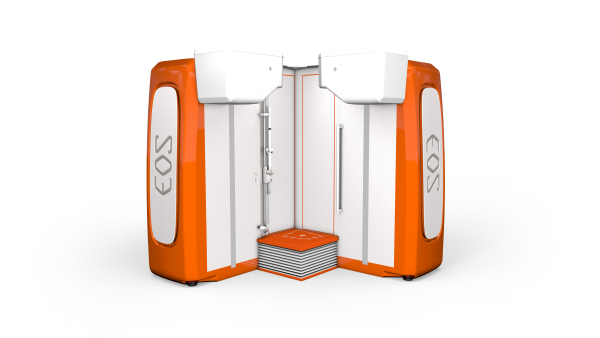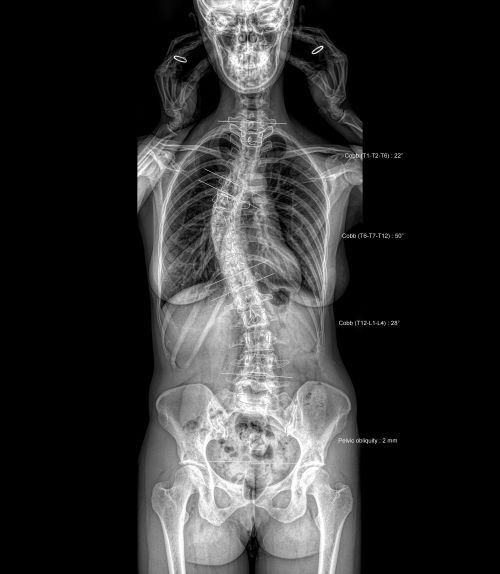EOSedge 2D/3D Imaging System
At CHOC, we believe in providing our patients with the best care and services, which is why we’re proud to offer the EOSedge system at our main hospital location in Orange. CHOC is one of the only pediatric facilities in Southern California to have the latest version of the EOSedge system. EOSedge is a state-of-the-art, low dose 2D/3D X-ray imaging system used for the management of orthopedic conditions, such as patients with scoliosis. The exam allows our physicians to see the interaction between the joints and the rest of the musculoskeletal system, particularly the spine, hips and legs.
What is the difference between a routine x-ray and an EOS exam?

EOS exams are unique because they capture both the front and side view of your child’s body at the same time. The system uses two X-ray beams to scan the patient, creating two high quality images of the entire body or a specific region of the body. The images can be used to generate 3D models and measurements, which provide a three-dimensional understanding of a patient’s medical condition and its complexity. This allows our doctors to make an accurate evaluation and tailor treatment plans for each patient.
With traditional imaging techniques, patients often need to lie down or hold an uncomfortable pose to get the best image. With EOSedge, patients are able to be scanned while standing or in a seated position. This allows the doctor to examine the natural posture, as well as the ways that the spine, hips, and lower limbs are positioned in relation to one another.
How is the exam performed?

During an EOS exam, your child is either sitting or standing for localized or full-body images in a natural, weight-bearing position. No lying down, no turning over. Each image is packed with information, allowing doctors to better understand and view interactions between the spine and lower limbs.
EOSedge produces high quality, digital X-ray images that are immediately available for you and your physician to review after the scan, which takes 10-25 seconds on average. The total exam time takes about 4 minutes including exam preparation. For some patients, 3D information may be requested by the doctor, in which case a trained EOS radiology technician will generate a 3D model using a special computer program. It can take about 1 to 3 days for the 3D data to be generated.
Is an EOS exam harmful to my child?
The EOS exam is fast, painless, and uses a radiation dose that are “as low as reasonably achievable.” Reducing dose is particularly beneficial for all pediatric patients that are more sensitive to the cumulative effects of radiation. For this reason, EOSedge can reduce radiation exposure to even lower levels while still being capable of producing 3D models and measurements for assessing global skeletal deformities in follow-up pediatric examinations.
We take every precaution to reduce radiation exposure across all imaging tests and exams. EOSedge is yet another tool that enables us to provide the best imaging services while reinforcing our commitment to safety and low dose imaging options for our patients. EOSedge also has a unique setting called Flex Dose (TM) that adjusts the amount of radiation the patient receives along the body. This setting minimizes exposure in areas of the body whenever possible, while still delivering the high-resolution images needed for our doctors to make treatment decisions.












